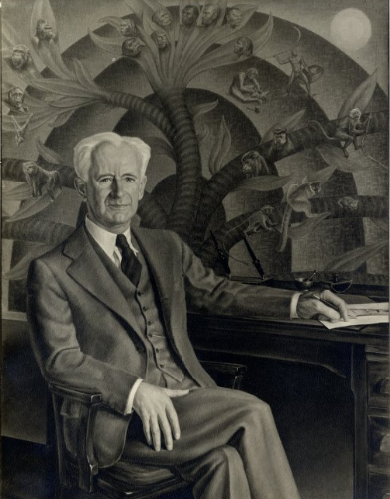Of Mice and Philosophers: Investigating Singing and Dancing Mice at the American Philosophical Society
On September 17, 1847, the Members of the American Philosophical Society concluded their meeting by gathering in the Librarian’s room to examine a singing mouse. The Society’s members concluded that there was “no difference in external form between this and the common mouse.” This mouse, found in a house in the Northern Liberties in Philadelphia, toured many learned institutions of the city that fall, including the Academy of Natural Sciences and the Franklin Institute, and it was just one example out of a number of singing mice reported on both sides of the Atlantic during the 19th and the 20th centuries. Only in the last decades, biologist Matina Kalcounis-Rüppell recorded ultrasonic noises and established that male mice sing to attract mates. Today, researchers hope that singing mice can shed more light on human speech disorders. However, in 1847, the members of the Society appointed as a Committee to examine the phenomena presented by the singing mouse, were most likely unable to reach convincing conclusions, as they did not author any reports.

Unusual mice resurface in the collections of the Society in the work of Robert Mearns Yerkes (1876-1956; APS 1936), known for his development of intelligence tests, especially the Point Scale for measuring mental ability. Yerkes considered himself a psychobiologist who studied animal and human behavior, and between 1903 and 1907 studied the so-called dancing mice, which are characterized by “their innate habit of running around, describing greater or smaller circles or more frequently whirling around on the same spot with incredible rapidity.”

The APS Library preserves letters exchanged between Yerkes and Herbert Spencer Jennings (1868-1947; APS 1907) as part of the Herbert Spencer Jennings Papers. Yerkes discussed in these letters the work with the dancing mice. On September 30, 1906, he expressed his hope that this book will “appeal to rather more people than most studies of the behavior of a single animal” (September 30, 1906, Yerkes to Jennings, Folder 2) and in the first months of 1907, he mentioned the loss of “four months work by the death of twenty dancers” (Yerkes to Jennings, Feb 16 1907, Folder 4). Jennings supported his research efforts and tried to encourage him: “if scientific research were not difficult, it would not be worth anything when done! I am sure there will still be much of great value in your work on the subject!” (Jennings to Yerkes, March 2, 1907) Jennings was right in encouraging Yerkes to persist. Yerkes’s book, The Dancing Mouse: A Study in Animal Behavior (1907) won the Cartwright Prize of the Alumni Association of the College of Physicians and Surgeons, Columbia University, and became a classic work.
In his book, Yerkes desired more than a mere exhaustive study of the dancing mice and developed methods to study the behavior and intelligence of animals. For example, by using what he called a “discrimination box” to study the ability of mice to distinguish among various colors and levels of brightness, Yerkes developed the Yerkes-Dodson Law, establishing that as a task increases in difficulty, the optimal motivation level decreases.

Singing and dancing mice were more than a curiosity and contributed to the emergence of mice as experimental animals in the twentieth century. The correspondence of APS members and the Meetings of the Society offer historians of science additional sources for the study of this topic.
